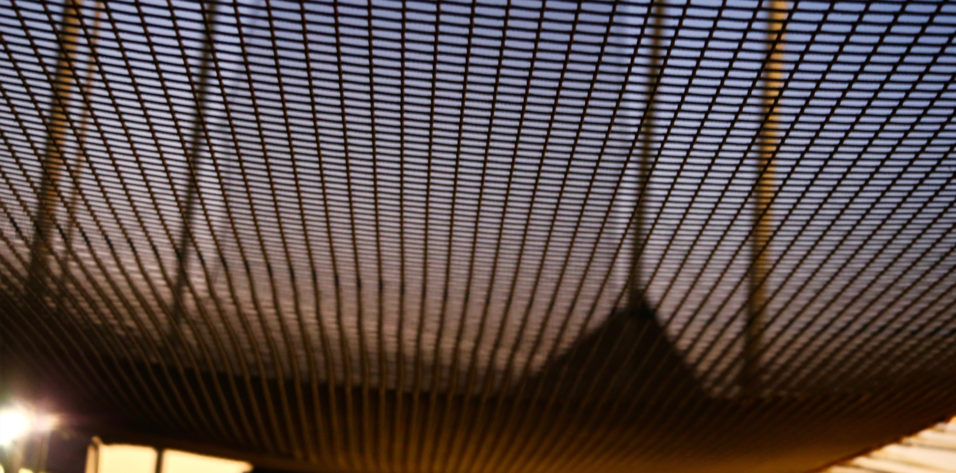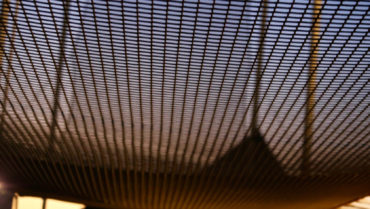The ideal placement of an IOL is in the capsular bag; however, this is not always possible due lack of capsular support. Inadequate capsular support can have a variety of origins, such as trauma, complicated ocular surgery, genetic causes such as Marfan syndrome or homocystinuria, pseudoexfoliation syndrome, and inflammatory causes.1 If partial capsular support is available, then IOL placement in the sulcus with or without optic capture is possible. If capsular support is absent, then the lens can be placed in the anterior chamber, fixated to the iris, or fixated to the sclera. Each method has advantages and disadvantages that must be considered.
ANTERIOR CHAMBER PLACEMENT
With anterior chamber IOL placement, the lens is put in the anterior chamber with the IOL haptics in the iridocorneal angle. This method has traditionally been easier than iris and scleral fixation because suturing or gluing is not involved. Older closed-loop anterior chamber IOLs were associated with increased complications such as glaucoma, corneal decompensation, and cystoid macular edema (CME) due to the lens’ proximity to the cornea and iridocorneal angle2; however, newer open-loop IOLs have fewer complications and are better tolerated.3-4
A major disadvantage of this technique is the need for a large wound (approximately 7 mm), given that the lens is made of PMMA and is not foldable. This can increase the risk of bleeding and delay healing, with the multiple sutures required for closure.
IRIS FIXATION
Iris-fixated IOL placement involves suturing the proximal portion of the IOL haptic to the iris periphery. Iris-claw lenses can be attached to the iris directly without the use of sutures, either anterior or posterior (known as retropupillary) to the iris.5 With these lenses, the haptics are replaced by “claws” that grasp portions of the iris to stay in place.
A study of 320 eyes with retropupillary fixation found few complications and no significant difference in endothelial cell density after surgery, with a mean follow-up period of 5.3 years.6 A comparison of anterior versus retropupillary placement of iris-claw lenses after penetrating keratoplasty (PKP) showed less endothelial cell loss 6 to 12 months after PKP with retropupillary placement.7 Iris fixation has been associated with CME and elevated intraocular pressure given the iris/lens rubbing, especially in cases with no capular support.
SCLERAL FIXATION
Transscleral IOL fixation was first introduced in 1983.8 It is performed by suturing the IOL haptics through the ciliary sulcus or the pars plana to the sclera. Complications include suture breakage or erosion, lens tilt, suprachoroidal hemorrhage, retinal detachment, and secondary glaucoma.9-11 More recently, a foldable acrylic IOL called Akreos (Bausch + Lomb) was developed that allows IOL insertion through a standard cataract wound with four-point fixation to the sclera.12,13 Polypropylene (Prolene; Ethicon) is the most commonly used suture material for sutured scleral fixation, but polytetrafluoroethylene (Gore-Tex; W.L. Gore & Associates), polyester (Mersilene; Ethicon), and polyethylene (Novafil; Covidien) have also been used.1
The first sutureless technique involved fixing the IOL haptics in scleral tunnels parallel to the limbus.14 In a later study, the haptics were tucked under scleral flaps that were secured with fibrin glue,15 which was found to have good IOL positioning in a 5-year study.16 A Y-fixation technique was developed that lead to intrascleral fixation without the use of glue or large scleral flaps.17 Externalizing the haptics in sutureless techniques can be done with either forceps14,15,18 or via 25-gauge,19 27-gauge,20 or 30-gauge needles.21 Using a scleral tunnel instead of a scleral flap requires less time, but it can be difficult to insert the IOL haptic into the scleral tunnel.14 Using 22-, 24-, or 25-gauge needles to make sclerotomies14,15,19 can lead to postoperative hypotony and wound leakage due to a mismatch in the size of the sclerotomies and the IOL haptics and requires the use of sutures to close the sclerotomies.
Yamane technique. Shin Yamane, MD, PhD, found that using a 27-gauge needle for the sclerotomy led to reliable wound closure with no suturing of the sclerotomy site.20 Dr. Yamane later refined this technique by creating sclerotomy incisions using special thin-walled, 30-gauge needles; he externalized the haptics with a double-needle technique and cauterized the haptic ends to create a flange for IOL fixation in scleral tunnels without the use of sutures or glue.21 An ultrathin-walled, 30-gauge needle with a larger internal diameter but the same external diameter as a normal 30-gauge needle must be used to allow successful insertion of the haptic while maintaining a narrow scleral tunnel. Using a regular 30-gauge needle is more likely to be unsuccessful, with an increased risk of haptic damage.22
Dr. Al-Mohtaseb showcases the Yamane technique for intrascleral IOL fixation.
With this technique, the main postoperative complication was iris capture by the IOL with lens tilt; vitreous hemorrhage, IOP elevation, corneal edema, and CME were rarer complications. This technique provides good haptic stability with a small wound, minimal angle and cornea trauma, no risk of suture exposure, less risk of secondary glaucoma or pupillary block, and less damage to uveal tissue, which results in less risk of postoperative hypotony, suprachoroidal hemorrhage, and intraoperative hemorrhage.
Three studies were found comparing anterior chamber IOLs versus iris-fixated IOLs versus scleral-sutured IOLs, two of which had IOL implantation at the time of PKP. All three found no difference in postoperative visual acuity and similar complication rates among the different IOL types.23-25 A 2003 report by the American Academy of Ophthalmology showed open-loop anterior chamber IOLs, iris-sutured IOLs, and scleral-sutured IOLs to be similarly safe and effective.26
We published a study from our Baylor practice and found that IOL placement in the sulcus with optic capture had the best visual outcomes, with no significant differences between anterior chamber IOLs, iris-fixated IOLs, and scleral-sutured IOLs. Anterior chamber IOL placement, however, was recommended in older individuals due to few early postoperative complications and significant improvement in visual acuity.27 It is important to note that these comparison studies were published before the advent of the Yamane technique for scleral fixation.
CONCLUSION
Given the above evidence, we recommend sulcus placement with optic capture if partial capsular support is available. If capsular support is absent, then the Yamane double-needle technique with flanged intrascleral IOL haptic fixation is recommended, given its minimal invasiveness and good haptic stability. When performing the double-needle technique, we use the TSK ultrathin- walled, 30-gauge hypodermic needle (Delasco) and the hydrophobic acrylic polymer Aaris EC-3 PAL IOL (Aaren Scientific), which has haptics made of polyvinylidene fluoride, making them difficult to break or bend. It is important to note that this technique is still only a two-point fixation and may result in IOL tilt or decentration. In addition, we do not yet have long-term data, so we are cautiously optimistic.
1. Holt DG, Stagg B, Young J, et al. ACIOL, sutured PCIOL, or glued IOL: where do we stand? Curr Opin Ophthalmol. 2012;23:62-67.
2. Smith PW, Wong SK, Stark WJ, et al. Complications of semiflexible, closed-loop anterior chamber lenses. Arch Ophthalmol. 1987;105:52-57.
3. Henning A, Johnson GJ, Evans JR, et al. Long term clinical outcome of a randomized controlled trial of anterior chamber lenses after high volume intracapsular cataract surgery. Br J Ophthalmol. 2001;85:11-17.
4. Rattigan SM, Ellerton CR, Chitkara DK, et al. Flexible open-loop anterior chamber intraocular lens implantation after posterior capsule complications in extracapsular cataract extraction. J Cataract Refract Surg. 1996;22:243-246.
5. Gicquel JJ, Langman ME, Dua HS. Iris claw lenses in aphakia. Br J Ophthalmol. 2009;93:1273-1275.
6. Forlini M, Soliman W, Bratu A, Rossini P, Cavallini GM, Forlini C. Long-term follow-up of retropupillary iris-claw intraocular lens implantation: a retrospective analysis. BCM Ophthalmol. 2015;15:143.
7. Gicquel JJ, Guigou S, Bejjani RA, et al. Ultrasound biomicroscopy study of the Verisyse aphakic intraocular lens combined with penetrating keratoplasty in pseudophakic bullous keratopathy. J Cataract Refract Surg. 2007;33:455-464.
8. Gess LA. Scleral fixation for intraocular lenses. Am Intraocular Implant Soc J. 1983;9:453-456.
9. Vote BJ, Tranos P, Brunc C, et al. Long-term outcomes of combined pars plana vitrectomy and scleral fixated sutured posterior chamber intraocular lens implantation. Am J Ophthalmol. 2006;141:308-312.
10. Solomon K, Gussler JR, Gussler C, et al. Incidence and management of complications of transsclerally sutured posterior chamber lenses. J Cataract Refract Surg. 1993;19:488-493.
11. Kjeka O, Bohnstedt J, Meberg K, Seland JH. Implantation of scleral-fixated posterior chamber intraocular lenses in adults. Acta Ophthalmol. 2008; 86(5):537-542.
12. Fass ON, Herman WK. Sutured intraocular lens placement in aphakic post-vitrectomy eyes via small-incision surgery. J Cataract Refract Surg. 2009;35:1492-1497.
13. Fass ON, Herman WK. Four-point suture scleral fixation of a hydrophilic acrylic IOL in aphakic eyes with insufficient capsule support. J Cataract Refract Surg. 2009;36:991-995.
14. Gabor SG, Pavlidis MM. Sutureless intrascleral posterior chamber intraocular lens fixation. J Cataract Refract Surg. 2007;33:1851-1854.
15. Agarwal A, Kumar DA, Jacob S, et al. Fibrin glue-assisted sutureless posterior chamber intraocular lens implantation in eyes with deficient posterior capsules. J Cataract Refract Surg. 2008;34:1433-1438.
16. Kumar DA, Agarwal A, Agarwal A, Chandrasekar R, Priyanka V. Long-term assessment of tilt of glued intraocular lenses: an optical coherence tomography analysis 5 years after surgery. Ophthalmology. 2015;122(1):48-55.
17. Ohta T, Toshida H, Murakami A. Simplified and safe method of sutureless intrascleral posterior chamber intraocular lens fixation: Y-fixation technique. J Cataract Refract Surg. 2014;40:2-7.
18. Totan Y, Karadag R. Trocar-assisted sutureless intrascleral posterior chamber foldable intra-ocular lens fixation. Eye (Lond). 2012; 26:788-791.
19. Rodriguez-Agirretxe I, Acera-Osa A, Ubeda-Erviti M. Needle guided intrascleral fixation of posterior chamber intraocular lens for aphakia correction. J Cataract Refract Surg. 2009;35:2051-2053.
20. Yamane S, Inoue M, Arakawa A, Kadonosono K. Sutureless 27-gauge needle-guided intrascleral intraocular lens implantation with lamellar scleral dissection. Ophthalmology. 2014;121:61-66.
21. Yamane S, Sato S, Maruyama-Inoue M, Kadonosono K. Flanged intrascleral intraocular lens fixation with double-needle technique. Ophthalmology. 2017;124:1136-1142.
22. Turnbull AM, Lash SC. Transconjunctival intrascleral intraocular lens fixation with double-needle and flanged-haptic technique: ultrathin line between success and failure. J Cataract Refract Surg. 2016;42:1843-1844.
23. Hazar L, Kara N, Bozkurt E, Ozgurhan EB, Demirok A. Intraocular lens implantation procedures in aphakic eyes with insufficient capsular support associated with previous cataract surgery. J Refract Surg. 2013;29:685-691.
24. Davis RM, Best D, Gilbert GE. Comparison of intraocular lens fixation techniques performed during penetrating keratoplasty. Am J Ophthalmol. 1991;111:743-749.
25. Schein OD, Kenyon KR, Steinert RF, et al. A randomized trial of intraocular lens fixation techniques with penetrating keratoplasty. Ophthalmology. 1993;100:1437-1443.
26. Wagoner MD, Cox TA, Ariyasu RG, Jacobs DS, Karp CL. Intraocular lens implantation in the absence of capsular support; a report by the American Academy of Ophthalmology (Ophthalmic Technology Assessment). Ophthalmology. 2003; 110:840-859.
27. Brunin G, Sajjad A, Kim E, et al. Secondary intraocular lens implantation: complication rates, visual acuity, and refractive outcomes. J Cataract Refract Surg. 2017;43(3):369-376.




